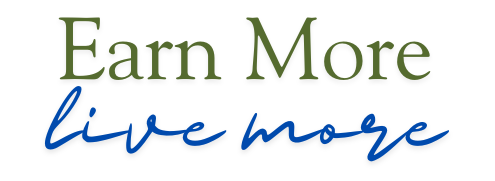Passive Income From Building And Selling Software Solutions

Passive income—sounds pretty sweet, right? In the world of software, this concept is all about making money while you sleep. By creating digital products that keep generating revenue over time with little ongoing effort, you can keep earning without punching in daily. That’s the dream!
Software solutions stand out as a lucrative path in this realm of passive income. It’s not just about coding once and waiting for the cash to roll in—although that can happen with a hit product. The appeal here lies in the potential to tap into a vast online market. Think apps, SaaS (Software as a Service) platforms, plug-ins; the list goes on.
So, what takes a software solution to that golden passive status? It’s all about setting things up right from the start. We’re talking about solid automation processes, irresistible customer service that doesn’t suck your time, and robust, scalable systems that can handle growth without constant tweaks.
We can actually see this magic at work in some real-world success stories. Take, for example, the developers behind widely used apps or plug-ins. Once they nailed the product-market fit and ironed out the initial kinks, these solutions moved to almost autopilot mode. They keep raking in cash while these folks focus on their next big idea or relax somewhere sunny.
Passive income via software might sound like a techie’s dream, but it’s not some fluke. With the right approach and thoughtful planning, it can be within reach. The trick? Balancing creativity with strategy, and keeping that user-centric mindset front and center.
Developing Market-Ready Software Solutions
Crafting a software solution that doesn’t just sit on a shelf starts with finding that sweet spot in the market. It’s all about spotting those profitable niches and keeping your ear to the ground for cool trends in tech. Not all ideas will hit the jackpot, but honing in on something unique or underserved can give you a killer start.
Once you’ve nailed down a promising concept, it’s time to kick off development. Here, you’ve gotta sketch out your master plan. Think about what your app or software will do and how it’ll benefit your users. That concrete vision will be your guiding light as you code and iterate.
When building, never underestimate the power of user experience. The software needs to be super easy and intuitive to use. Get feedback, and not just from your grandma—real users who’ll give you the straight dope. This loop of design, feedback, and refining will lead you to a more polished product.
And don’t forget scalability. If your software’s going to be a hit, it needs to grow with its user base. Plan from the get-go so you don’t get stuck reworking major chunks down the line. Think about tech stacks, servers, and all that geeky infrastructure stuff early on.
This phase might sound a bit daunting, but remember—you’re building something that’s gonna make life easier for folks out there. Keeping focused on that mission can be incredibly rewarding, not just in the satisfaction of creating but also in seeing the financial rewards roll in later.
Maximizing Revenue from Selling Software Solutions
Marketing your software like a pro is key to making sales fly. You’ve got this awesome product, but if nobody knows about it, it won’t take off. Get the word out there! Use social media, tech forums, and good ol’ word of mouth to reach those who’ll find it indispensable.
Choosing the right pricing model can make a huge difference in how your software performs financially. Subscription models might offer a steady income stream, but a one-time purchase might be just what your target audience finds attractive. Weigh the pros and cons for each option based on your audience’s needs and your earning goals.
Where your software is available can also affect its success. From app stores to SaaS platforms, or selling directly from your website, each option has its unique benefits and challenges. Research what aligns best with your distribution strategy and customer habits.
Long-term maintenance might sound like a chore, but it’s vital for keeping users satisfied and returning for more. Think of it as building trust with your users. Regular updates, bug fixes, and friendly customer support all contribute to a product’s longevity and user loyalty. After all, happy users are the ones that keep those income streams flowing and might even become your most powerful promoters!







Hello,
I’ve been considering creating a product which could be, eventually, used to generate a passive income.
I’m not tech savvy at all and any talk of coding or ‘techi-stuff usually sends me running.
I enjoyed your article and your tactics to build a product which could become a passive income earning can be transposed to any marketing. Do you agree.
I enjoyed reading your article even if some of the ‘words’ sounded a bit scary!!
Jackie
Hello Jackie,
Don’t be afraid of new tech, you can handle it. Take it slow and just try to learn one thing a day. Before you know it you will have mastered it. You might even enjoy it once you have a handle on it. And yes, these principles are universal and can be transposed to any number of marketing spheres.
Jump in the deep end on Tech. Close your eyes and take the first step – you’ve got this.
This post is a fantastic guide for anyone curious about creating passive income through software solutions. It simplifies a complex topic, breaking it into actionable steps for tech enthusiasts and entrepreneurs alike. The emphasis on automation, scalability, and customer-centric design is spot on—these are the pillars that truly differentiate a sustainable passive income stream from a fleeting venture.
I especially appreciate the advice on finding a niche and understanding market trends. Identifying underserved areas in tech is critical, and it’s great that this post highlights the importance of blending creativity with strategy. Moreover, the section on maximizing revenue is insightful. Marketing, pricing models, and distribution channels are often overlooked, but they are vital to a product’s success.
The focus on user feedback and ongoing maintenance is a reminder that even passive income requires effort upfront and a commitment to long-term quality. Overall, this is a motivational yet realistic roadmap for anyone aiming to create software solutions that generate income and make a difference.
We have found that one of the best metrics for our sites is user feedback. It allows you to quickly identify new trends and be an early adapter. It does take more work but it pays off. The early bird gets the worm.